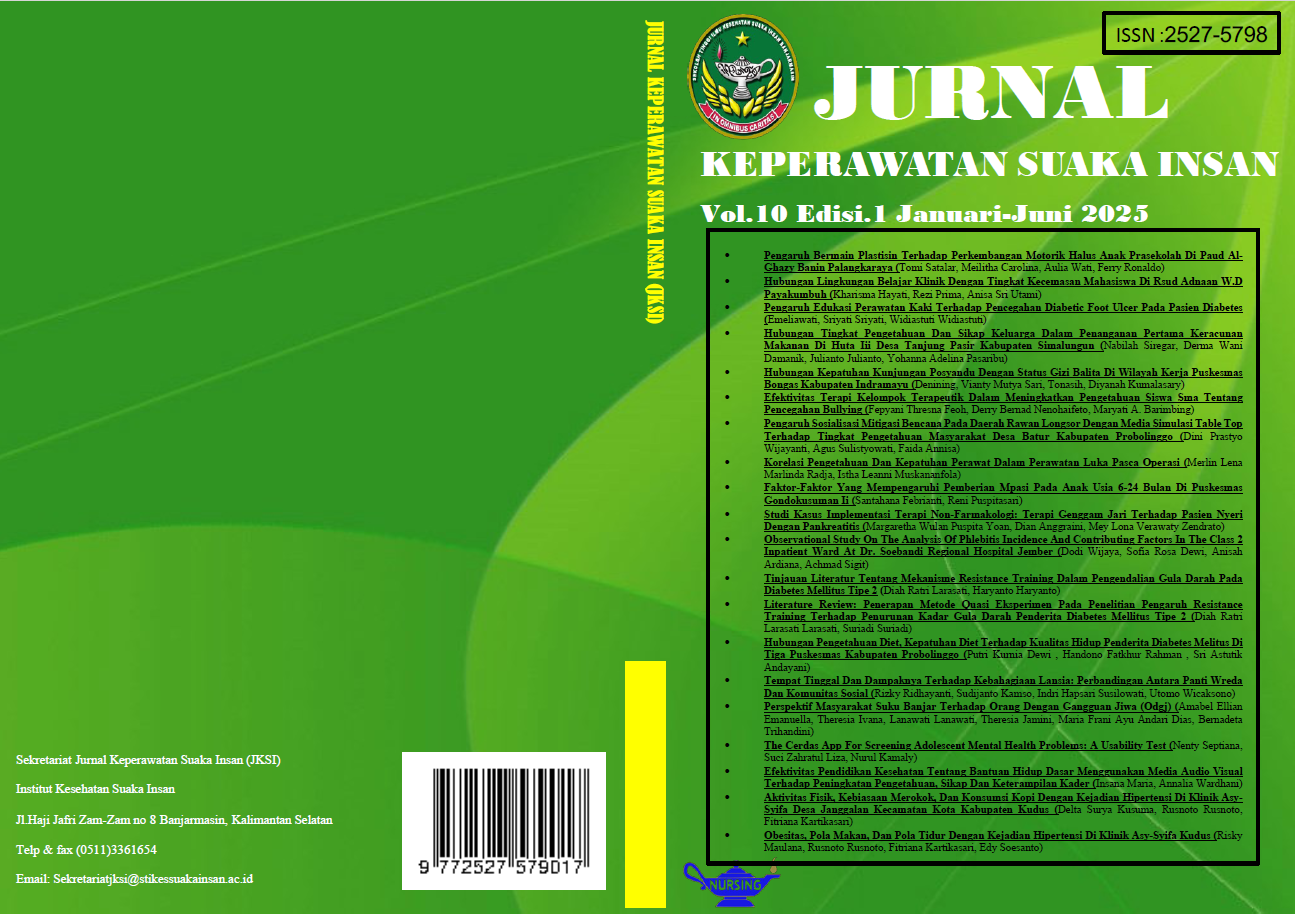OBSERVATIONAL STUDY ON THE ANALYSIS OF PHLEBITIS INCIDENCE AND CONTRIBUTING FACTORS IN THE CLASS 2 INPATIENT WARD AT dr. SOEBANDI REGIONAL HOSPITAL JEMBER
DOI:
https://doi.org/10.51143/jksi.v10i1.724Keywords:
Healthcare-Associated Infections (HAIs) Intravena Catheter Phlebitis Visual Infusion Phlebitis ScaleAbstract
Hospitals can spread nosocomial infections, including phlebitis, within 72 hours of admission. Phlebitis, an inflammation of veins often caused by IV lines, can lead to severe systemic infections. This study examines the incidence and contributing factors of phlebitis in Class 2 inpatient wards at RSD dr. Soebandi Jember, using observational analytic methods and a quota sampling of 88 adult patients from a 756-patient population, selected via Slovin's formula. Observations from September 10-18, 2024, involved the Visual Infusion Phlebitis Scale (VIP) and medical records. Results showed 77 patients (87.5%) without phlebitis, and 11 patients (12.5%) with phlebitis: 8 (9.1%) with mild degree 1 and 3 (3.4%) with degree 2 symptoms. Contributing factors include age, gender, chronic diseases, and reactions to certain medications. These findings suggest the importance of adherence to standard operating procedures for IV care to prevent infections. Practical implications include improving nurse training on IV care protocols to minimize phlebitis and related complications, thereby enhancing patient outcomes.
Downloads
Published
How to Cite
Issue
Section
License
Copyright (c) 2025 Dodi Wijaya, Sofia Rosa Dewi, Anisah Ardiana, Achmad Sigit

This work is licensed under a Creative Commons Attribution 4.0 International License.
Authors who publish with Jurnal Keperawatan Suaka Insan (JKSI) agree to the following terms:
1) Authors retain copyright and grant Jurnal Keperawatan Suaka Insan (JKSI) right of first publication with the work simultaneously licensed under a Creative Commons Attribution License CC BY that allows others to remix, adapt, and build upon the work with an acknowledgment of the work’s authorship and initial publication in this journal.
2) Authors are able to enter into separate, additional contractual arrangements for the non-exclusive distribution of the journal’s published version of the work (e.g., submit it to an institutional repository or publish it in a book), with an acknowledgment of its initial publication in this journal.
3)Authors are permitted and encouraged to post their work online (e.g., in institutional repositories or on their website) prior to and during the submission process, as this can lead to productive exchanges, as well as earlier and greater citation of published work (see the discussion about The Effect of Open Access).











